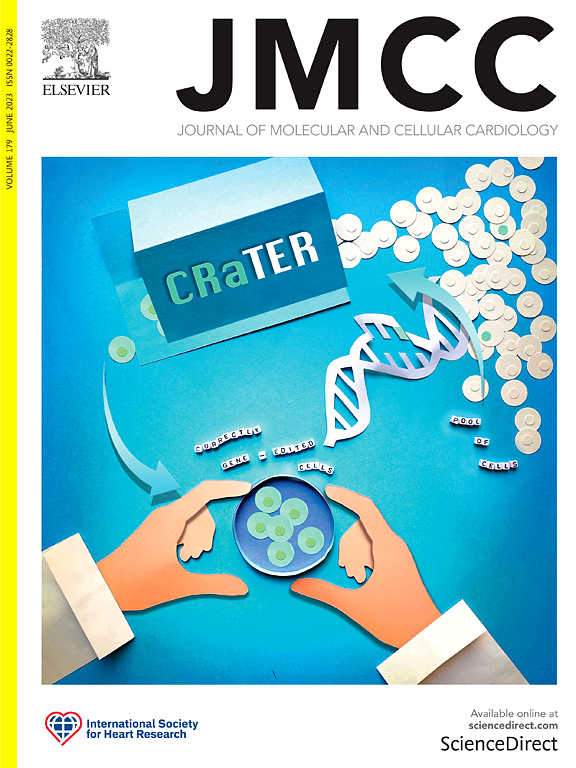Endothelial SHP-1 regulates diabetes-induced abnormal collateral vessel formation and endothelial cell senescence
IF 4.7
2区 医学
Q1 CARDIAC & CARDIOVASCULAR SYSTEMS
引用次数: 0
Abstract
Background
Critical limb ischemia is a major cause of peripheral arterial disease and morbidity affecting patients with diabetes. Diabetes-induced premature senescence of endothelial cells (EC) has been proposed as a mechanism leading to impaired ischemia-driven angiogenesis. We showed that hyperglycemia induced expression of the protein tyrosine phosphatase SHP-1, which reduced angiogenic factor activity in ischemic muscle of diabetic mice. Here, we evaluate the impact of SHP-1 deletion on EC function and senescence.
Methods
Ligation of the femoral artery was performed in nondiabetic (NDM) and 3 months diabetic (DM) mice with EC-specific deletion of SHP-1. Cell migration, proliferation and protein expression were evaluated in EC exposed to normal (NG) or high glucose (HG) concentrations. Gastrocnemius and tibial artery of patients with diabetes were collected and analyzed.
Results
Blood flow reperfusion and limb function were reduced by 43 % and 82 %, respectively in DM mice as compared to NDM mice. EC-specific deletion of SHP-1 in DM mice restored blood flow reperfusion by 60 %, and limb function by 86 %, while capillary density was similar to NDM mice. Moreover, ablation of SHP-1 in EC prevented diabetes-induced expression of the senescence markers p53 and p21 and counteracted Nrf2 downregulation. In EC, elevated expression of beta-galactosidase, p21 and p53, and suppression of Nrf2 and VEGF actions were observed in EC exposed to HG levels and human muscle and artery of patients with diabetes, effects that were reversed by overexpression of dominant negative SHP-1.
Conclusion
SHP-1 in EC is a central effector of diabetes-induced senescence and induces aberrant collateral vessel formation and blood flow reperfusion. Reduced SHP-1 expression counteracts these pathologic features.

内皮细胞SHP-1调节糖尿病诱导的异常侧支血管形成和内皮细胞衰老。
背景:严重肢体缺血是糖尿病患者外周动脉病变和发病的主要原因。糖尿病诱导的内皮细胞(EC)过早衰老被认为是导致缺血驱动的血管生成受损的一种机制。我们发现高血糖诱导蛋白酪氨酸磷酸酶SHP-1的表达,从而降低糖尿病小鼠缺血肌肉中血管生成因子的活性。在这里,我们评估了SHP-1缺失对EC功能和衰老的影响。方法:对非糖尿病(NDM)和3 月龄糖尿病(DM)小鼠进行股动脉结扎,小鼠ec特异性缺失SHP-1。细胞迁移、增殖和蛋白表达在暴露于正常(NG)或高葡萄糖(HG)浓度的EC中进行评估。收集糖尿病患者腓肠肌和胫动脉进行分析。结果:与NDM小鼠相比,DM小鼠的血流再灌注和肢体功能分别降低了43% %和82% %。DM小鼠ec特异性缺失SHP-1,血流再灌注恢复60% %,肢体功能恢复86% %,毛细血管密度与NDM小鼠相似。此外,在EC中消融SHP-1可以阻止糖尿病诱导的衰老标志物p53和p21的表达,并抵消Nrf2的下调。在EC中,暴露于HG水平的EC以及糖尿病患者的人体肌肉和动脉中,观察到β -半乳糖苷酶、p21和p53的表达升高,Nrf2和VEGF的作用受到抑制,这种作用被显性阴性SHP-1的过表达逆转。结论:EC中SHP-1是糖尿病诱导衰老的中心效应因子,可诱导异常侧支血管形成和血流再灌注。SHP-1表达的减少抵消了这些病理特征。
本文章由计算机程序翻译,如有差异,请以英文原文为准。
求助全文
约1分钟内获得全文
求助全文
来源期刊
CiteScore
10.70
自引率
0.00%
发文量
171
审稿时长
42 days
期刊介绍:
The Journal of Molecular and Cellular Cardiology publishes work advancing knowledge of the mechanisms responsible for both normal and diseased cardiovascular function. To this end papers are published in all relevant areas. These include (but are not limited to): structural biology; genetics; proteomics; morphology; stem cells; molecular biology; metabolism; biophysics; bioengineering; computational modeling and systems analysis; electrophysiology; pharmacology and physiology. Papers are encouraged with both basic and translational approaches. The journal is directed not only to basic scientists but also to clinical cardiologists who wish to follow the rapidly advancing frontiers of basic knowledge of the heart and circulation.

 求助内容:
求助内容: 应助结果提醒方式:
应助结果提醒方式:


